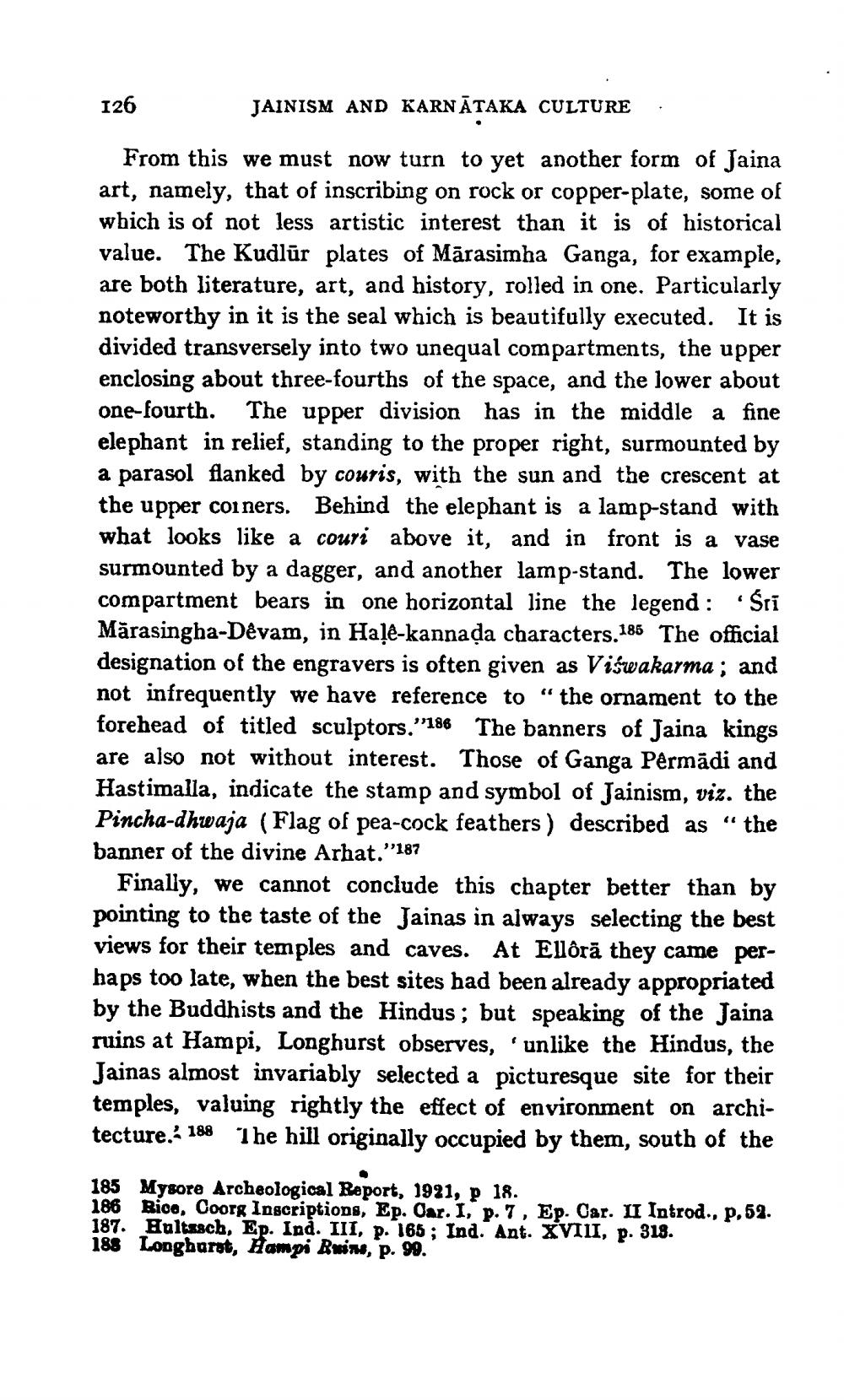________________
126
JAINISM AND KARNĀTAKA CULTURE.
From this we must now turn to yet another form of Jaina art, namely, that of inscribing on rock or copper-plate, some of which is of not less artistic interest than it is of historical value. The Kudlūr plates of Mārasimha Ganga, for example, are both literature, art, and history, rolled in one. Particularly noteworthy in it is the seal which is beautifully executed. It is divided transversely into two unequal compartments, the upper enclosing about three-fourths of the space, and the lower about one-fourth. The upper division has in the middle a fine elephant in relief, standing to the proper right, surmounted by a parasol flanked by couris, with the sun and the crescent at the upper coi ners. Behind the elephant is a lamp-stand with what looks like a couri above it, and in front is a vase surmounted by a dagger, and another lamp-stand. The lower compartment bears in one horizontal line the legend: Śrī Mārasingha-Devam, in Hale-kannada characters.185 The official designation of the engravers is often given as Viswakarma; and not infrequently we have reference to "the ornament to the forehead of titled sculptors."186 The banners of Jaina kings are also not without interest. Those of Ganga Përmādi and Hastimalla, indicate the stamp and symbol of Jainism, viz. the Pincha-dhwaja (Flag of pea-cock feathers ) described as “the banner of the divine Arhat."187
Finally, we cannot conclude this chapter better than by pointing to the taste of the Jainas in always selecting the best views for their temples and caves. At Ellôrā they came perhaps too late, when the best sites had been already appropriated by the Buddhists and the Hindus; but speaking of the Jaina ruins at Hampi, Longhurst observes, unlike the Hindus, the Jainas almost invariably selected a picturesque site for their temples, valuing rightly the effect of environment on architecture. 188 The hill originally occupied by them, south of the
185 Mysore Archeological Report, 1991, p 18. 186 Rico, Coorg Inscriptions, Ep. Car. I, p. 7, Ep. Car. II Introd., p.52. 187. Hultasch, Ep. Ind. III, p. 165 ; Ind. Ant. XVIII, p. 318. 188 Longhorst, Hampi Ruim, p. 99.




